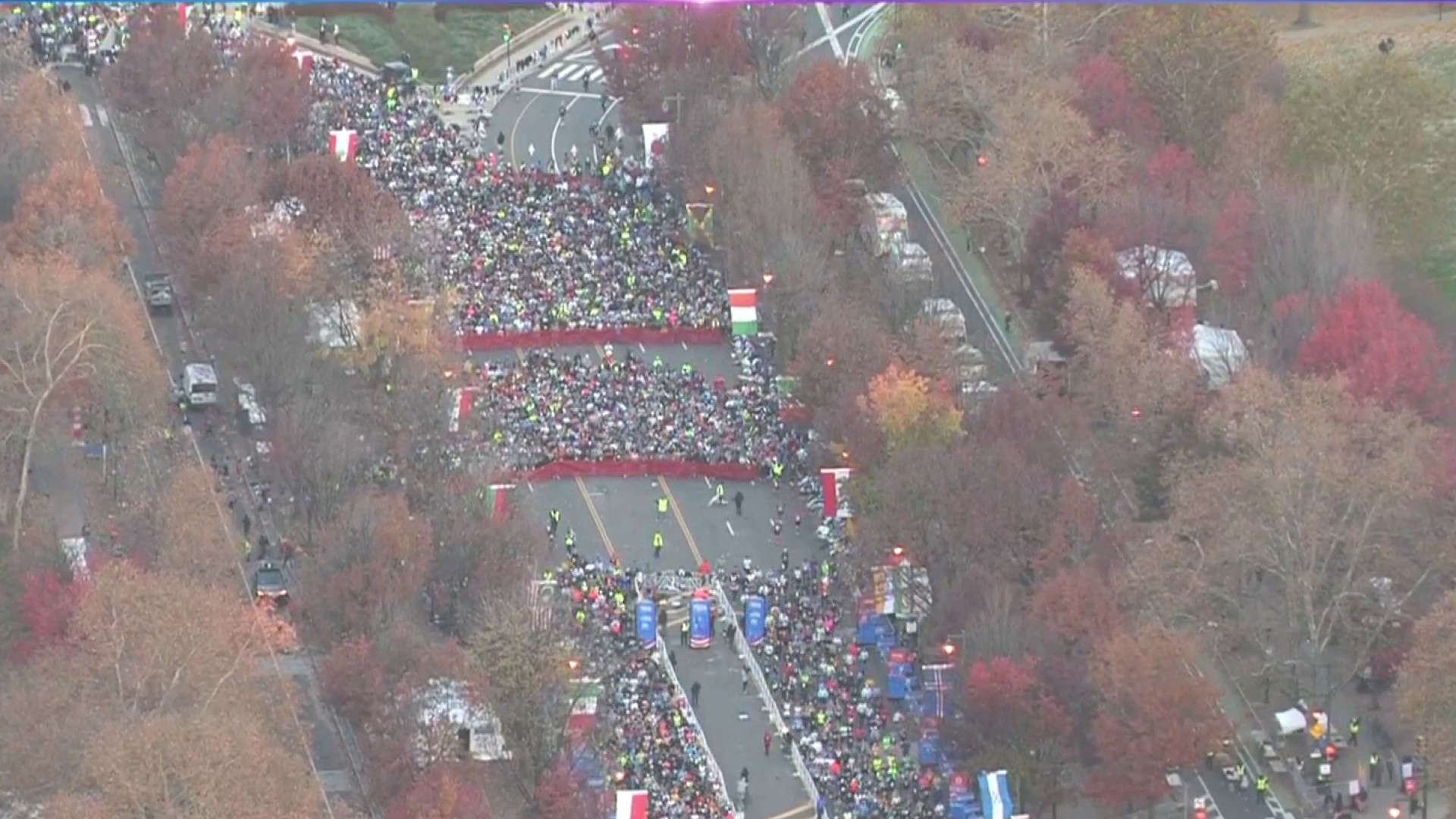Space colonization is pretty much the cornerstone to any techno-futurist's fantasy. This month SpaceX founder Elon Musk announced he's working to get a million people on Mars, within the next century. But these dreams of humanity's future in space have one major hurdle...sex. Scientists aren't sure whether it's even possible to reproduce in outer space.
To consider reproduction in space, it's helpful to start with plant sex, because plants are actually one of the only organisms we've seen get down to business in a space-like setting.
Our two plant sex voyeurs are Anja Geitmann, a plant biologist at the University of Montreal, and her lab manager, fellow plant biologist, Youssef Chebli. They study pollen, the male sex cells of the plant world.
Chebli showed me one of the capsules of pollen grains they store in the lab freezer. It looks like a little yellow pill. He opens one in my hand, and pollen resembling turmeric powder spills out of it. These, he says, are pollen grains.
Each pollen grain's a cell, he explains. When the pollen cell lands on the female part of a plant, it grows what's called a pollen tube. It looks like a little finger. That finger burrows into the female part of the plant, and deposits plant sperm in the plant's eggs.
"It has a lot of analogy to human fertilization," Geitman chuckles. "Obviously! It's a cylindrical tool. But it gets very, very long. Any guy could be very envious of the aspect ratio."
The pollen tube's the fastest growing cell in the plant kingdom—sometimes plants need to get it on really fast. And Chebli and Geitmann started to wonder if the pollen tube growth, this super important step of plant germination, could happen in space. To simulate that, they needed watch the pollen in an alternate gravity.
"So we had to build like an in-house centrifuge," says Chebli.
He plugged it in to show me. The centrifuge's just this round tray they bought from a dollar store, on top of a little spinning motor. The tray spins at about the speed of a record player. And when it spins, it changes the amount of gravity acting on whatever's on top of it.
Local
Breaking news and the stories that matter to your neighborhood.
They also used gravity-altering machines at the European Space Agency in the Netherlands.
To induce pollen tube growth, Chebli would put some Japanese Camellia pollen on a moist microscope slide. Camellia pollen grains, it turns out, are not difficult to arouse.
"You know, they're men," Chebli jokes, "so they're easy to convince."
They'll get excited, grow a pollen tube, in response anything remotely resembling a female Camellia flower. Which apparently salty sugary water on a microscope slide does.
At least, that's what happens at normal gravity. But in higher and lower gravity, a lot of the pollen grains failed to grow a pollen tube. They failed to germinate.
"However," says Geitmann, "those grains that did succeed in germinating, that did overcome this initial hurdle of having to do that under different gravity conditions, the tubes did grow very well."
But then Chebli and Geitmann started looking closer at those pollen tubes that managed to grow. They looked at how the pollen tube material got distributed within the cell, how the building blocks got transported to where they needed to be. And at altered gravity, it was a total mess. The pollen tube cell components weren't going where they should be going. Which is kind of concerning. Geitmann says this could be bad for human cells too.
"So that could affect embryo development absolutely," she says, "early stages of embryo. And hence we have to ask you know will it be healthy to have babies in space at some point?"
Babies in space
When I was 24, finally starting to try to be a real grownup, I got a really bad case of acne. The kind where people you know and love feel compelled to ask, Hey, uh, what's wrong with your face? A dermatologist got me on the medication Acutane. And it worked, though its side effects made every cell in my body feel parched—dry skin, dry lips, dry eyes even.
But it was the side effects I didn't see that really haunted me: possible birth defects. Each month I had to get certified as pregnancy-free before I could get my next batch of pills. No one talked about what what might be wrong with these carefully-averted Acutane babies. I think it's safe to say we fear deformities in our offspring with an unparalleled clench in the gut.
So having babies in space, at zero gravity, when we don't know what that lack of gravity will do to their development, that's not something people are approaching lightly.
In 2011 the Institute of Medicine advised NASA to make reproduction and development research a priority.
Joseph Tash is one of the people they've brought on to do that. He's a reproductive biologist at the University of Kansas medical center. He admits he's kind of the sperm guy.
Like plant sperm, animal sperm at microgravity seems a bit off. In the late nineties Tash sent sea urchin sperm aboard two space shuttle flights. And yes, he confirms, sea urchin have sperm.
"The interesting thing about the sperm cell, in mammals and lower animals like sea urchins," he says, "is that the sperm are very similar, they're very uniquely developed cells that have basically two functions: to swim and and to fertilize."
He found that the chemical reactions that get the sperm swimming, those happened faster in space.
"On the other hand," Tash says, "the chemical reactions that the sperm undergo in response to the proteins that trigger their fertilization response were much slower."
Maybe even too slow to fertilize eggs successfully. There's questions about the affect of radiation on the reproductive equipment too, but the point is we just don't know the full effects yet. NASA astronauts now have to sign informed consent agreements, saying they know spaceflight could put their sperm at risk. And eggs too. Things aren't looking great for those either.
Tash and his team sent female mice on recent space shuttle flights. When the mice came back, their ovaries showed signs that their ovulation cycle had stopped.
Then, there's the Russian rats.
"In the late 70's," he says, "the Russians flew a satellite experiment where they had three female rats and two male rats, that were put into a satellite. When the satellite came back to Earth, they examined the females for any evidence of pregnancy and there was none. So either the females and the males didn't mate. Or they mated but maybe the females weren't producing eggs."
Those same male rats showed they were capable of fathering babies back on Earth.
But there's something else to consider about why those rats couldn't get it together. Maybe they really couldn't get themselves together.
"Yes," says NASA research scientist and Wake Forest University obstetrics professor April Ronca, "they were commingling freely in this environment, and probably had no paw holds or physical supports."
These rats were just floating out there. Zero gravity could make intimacy pretty tricky.
"Because they may not be able to physically engage one another to perform the mating act," she adds.
If April Geitmann is the pollen woman, Joseph Tash is the sperm guy, Ronca is the general pregnancy person when it comes to space research. She says even if we can get sperm and eggs to work in space, even if sex is possible, there's so many other steps of reproduction that could go wrong.
"From mating," she says, to "conception, pregnancy, embryonic fetal development, birth, lactation, maternal care and even the young growing up to sexual maturity."
Those all may be affected by a lack of gravity. No mammal's given birth in space yet. Ronca has had rats spend the second half of their pregnancies in space, and come back to Earth to give birth. Those babies seemed alright.
"The only difference we observed," she reports, "is that the pups were born with twice as many labor contractions on the part of the mother."
Ronca wants to take things step by step, first figure out what's really up with sperm and eggs at microgravity. Then she'll want to see whether fertilization can happen in space, then see what early embryonic development looks like, later pregnancy, birth in space.
And that's all just within one generation.
"Then add onto that," she says, "the effects across generations are fascinating in terms of looking at how we actually could look at the first space originated mammal after a few generations, when the parental sex cells and the sex cells of the first offspring born in space are no longer carrying that memory of gravity. What will we look like if we reproduce in space over multiple generations? Will we ever be able to come back to Earth?"
Ronca says it could be a long time til we can say scientifically whether human reproduction's gonna really work in space. But with more long term spaceflights on the horizon, commercial spaceflights coming up, a baby conceived in space might just happen.
The logistics of space sex
The bathroom may be the only place astronauts on say a Mars mission can sneak away for some privacy. I tried to imagine how someone might feel emotionally to have sex in a space like that. Turned on? Desperate? Anxious about what others might think of you? Anxious of what you might think of you?
"Well that certainly is a big question about whether you could have privacy in something of that size," says Jason Kring, a human factors psychologist at Embry-Riddle University. "And I think the short answer is no. That you would not have privacy. That if two people were to have sex that most everyone on the ship would know about it. I think that's inevitable."
Kring studies how small teams, like those on a Mars mission, interact. His lab's even got an old Airstream trailer kitted out to mimic a Mars shuttle. He says the astronauts that make up early long term flights will be a pretty special set. They'll be young, with similar goals, similar education backgrounds, and they'll have a lot of time for bonding.
He says those challenges zero gravity poses to the actual sex act, they'll figure it out. But if nothing else, hookups could be risky for crew morale. He says in a close environment like a spaceship, small annoyances can become big problems.
"People will start to complain," he says, "or get frustrated with each other, because you sat on my bed or you touched some of my food utensils. So a lot of these little issue get blown out of proportion, because I think you can't get away from people in these environments."
Conflicts over sex could really mess with productivity in a setting where cohesion's super important. NASA won't comment on whether astronauts have had sex in space. They ignored multiple requests for a statement on their sex policy.
But they are funding further research into space sex biology. Their scientists like Joseph Tash and April Ronca are now working on sending human sperm up into space on an upcoming shuttle flight.



